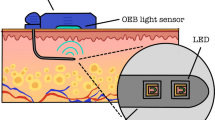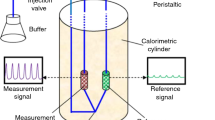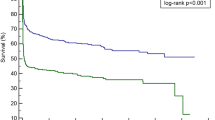Abstract
Objective: To determine the reliability, precision and clinical usefulness of a newly developed substrate-specific lactate/blood gas analyzer (Chiron M865). Setting: A university hospital 31-bed mixed medical/surgical intensive care unit (ICU). Patients: Seventeen critically ill patients with sepsis (n = 4), post-cardiac surgery (n = 8), hepatic failure (n = 2) or acute respiratory failure (n = 3). Measurements and results: Lactate levels were measured in 17 critically ill patients on whole blood using the new Chiron M865, and on plasma by a stat lactate/glucose analyzer (Yellow Spring Instrument, YSI mode 2300) and a reference lactate/glucose/electrolyte/enzyme analyzer (Hitachi 911). The influences of temperature and storage on blood lactate levels were then evaluated. Mean lactate values obtained were 3.73 ± 2.84 mmol/l with the Chiron, 3.03 ± 2.60 mmol/l with the YSI, and 3.59 ± 2.92 mmol/l with the Hitachi. There was a strong correlation between the three analyzers (Chiron vs YSI r = 0.99; Chiron vs Hitachi 911 r = 0.98), and good agreement between the Chiron and the two other methods (Chiron/YSI bias was –0.65, SD 0.50 mmol/l; Chiron/Hitachi bias was 0.12, SD 0.55 mmol/l). The variability coefficients were 3.7 % for the Chiron and 3.0 % for the YSI. During short term storage, a continuous increase in lactate levels was observed at room temperature (2.36 ± 1.68 mmol/l to 2.53 ± 1.74 mmol/l, p < 0.05), but when the samples were kept on ice there was just a small statistically significant, but not clinically significant, increase after 8 min (2.37 ± 1.62 mmol/l to 2.39 ± 1.63 mmol/l, p < 0.05). For longer storage times, samples on ice showed a small increase in lactate levels after 15 min (3.73 ± 2.90 mmol/l to 4.01 ± 3.00 mmol/l, p < 0.05) but no further increase during the subsequent 45 min. Conclusions: The new Chiron lactate analyzer is reliable for serial whole blood lactate measurements in an intensive care stat laboratory. Samples should be kept on ice immediately after sampling to minimize in vitro erythrocyte production of lactate.
Similar content being viewed by others
Author information
Authors and Affiliations
Additional information
Received: 25 September 1998 Final revision received: 4 January 1999 Accepted: 3 February 1999
Rights and permissions
About this article
Cite this article
Noordally, O., Vincent, JL. Evaluation of a new, rapid lactate analyzer in critical care. Intensive Care Med 25, 508–513 (1999). https://doi.org/10.1007/s001340050889
Issue Date:
DOI: https://doi.org/10.1007/s001340050889




